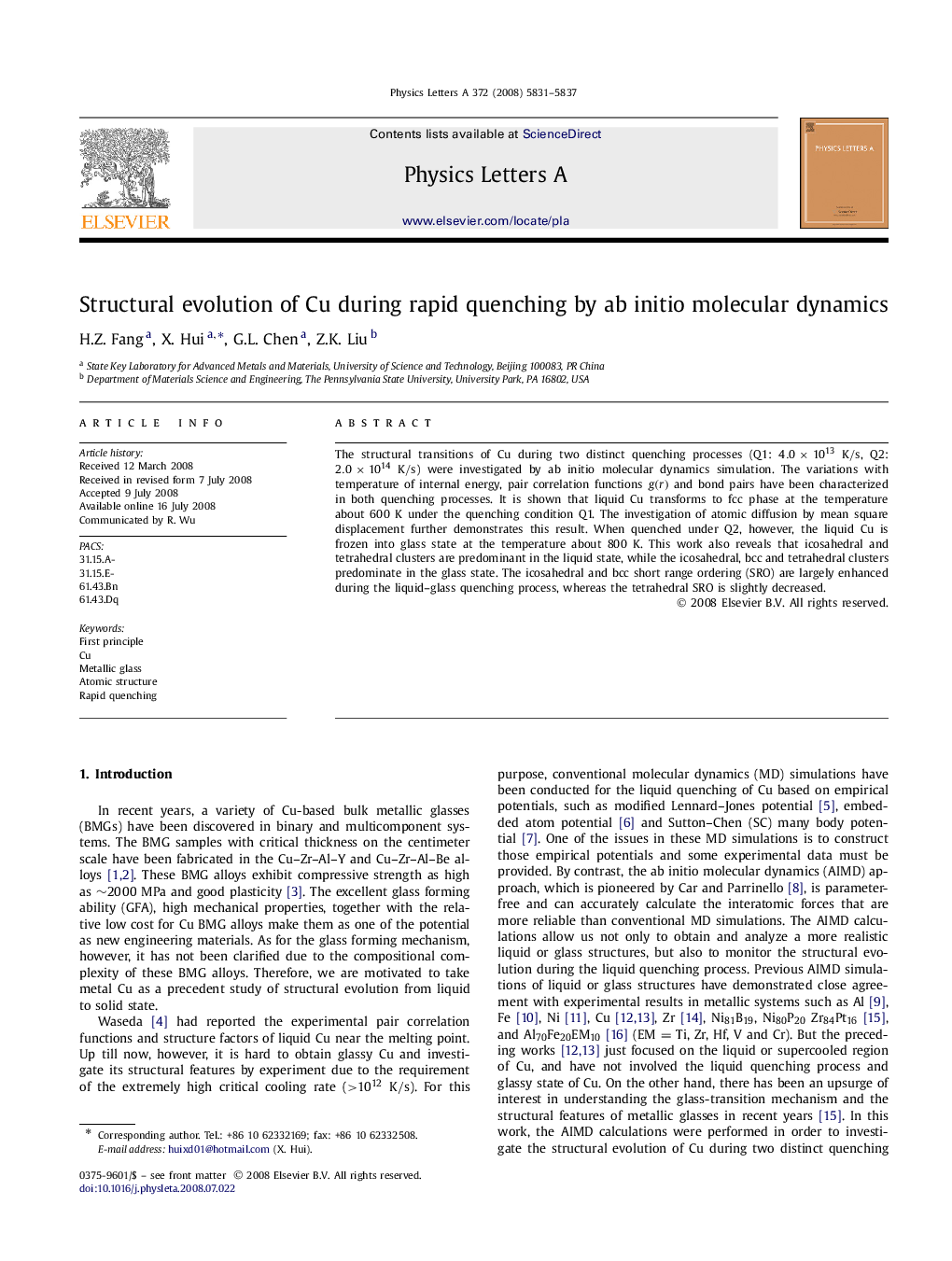| Article ID | Journal | Published Year | Pages | File Type |
|---|---|---|---|---|
| 1866006 | Physics Letters A | 2008 | 7 Pages |
Abstract
The structural transitions of Cu during two distinct quenching processes (Q1: 4.0Ã1013K/s, Q2: 2.0Ã1014K/s) were investigated by ab initio molecular dynamics simulation. The variations with temperature of internal energy, pair correlation functions g(r) and bond pairs have been characterized in both quenching processes. It is shown that liquid Cu transforms to fcc phase at the temperature about 600 K under the quenching condition Q1. The investigation of atomic diffusion by mean square displacement further demonstrates this result. When quenched under Q2, however, the liquid Cu is frozen into glass state at the temperature about 800 K. This work also reveals that icosahedral and tetrahedral clusters are predominant in the liquid state, while the icosahedral, bcc and tetrahedral clusters predominate in the glass state. The icosahedral and bcc short range ordering (SRO) are largely enhanced during the liquid-glass quenching process, whereas the tetrahedral SRO is slightly decreased.
Keywords
Related Topics
Physical Sciences and Engineering
Physics and Astronomy
Physics and Astronomy (General)
Authors
H.Z. Fang, X. Hui, G.L. Chen, Z.K. Liu,
